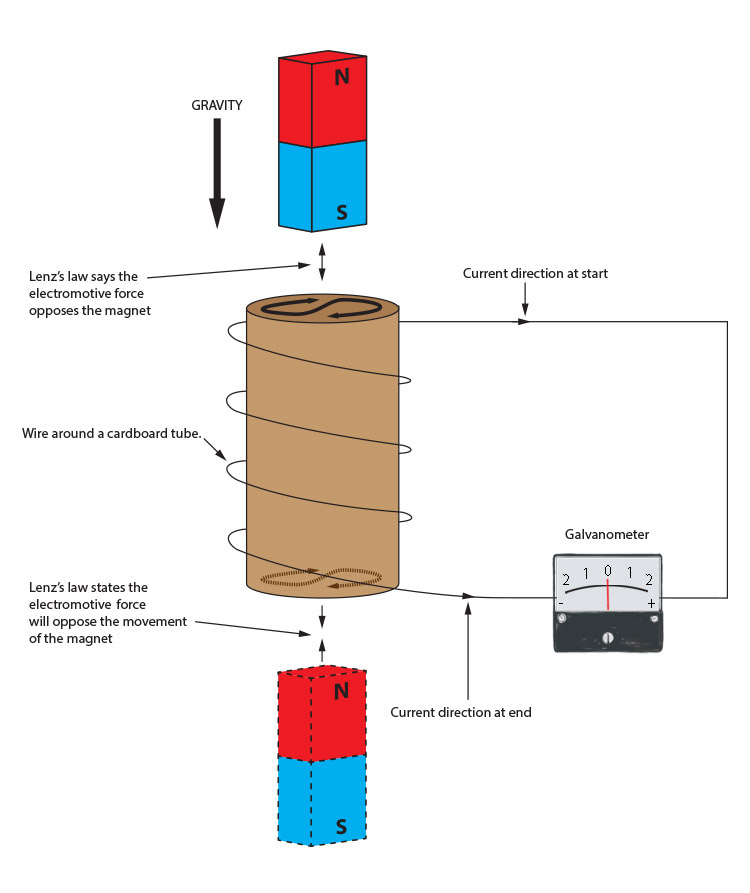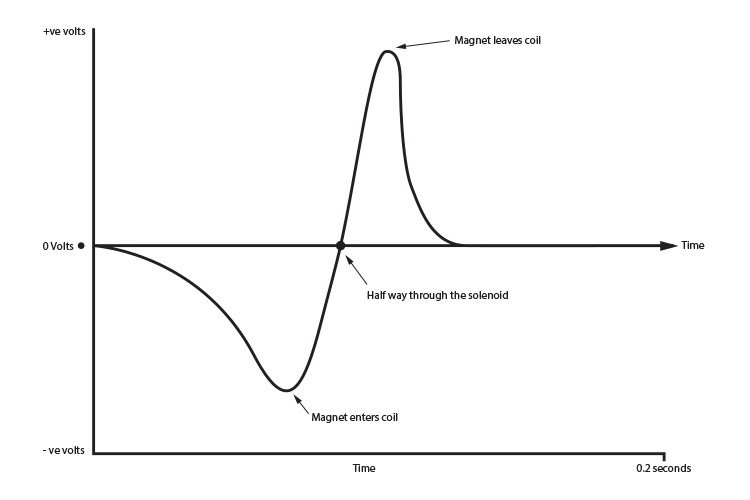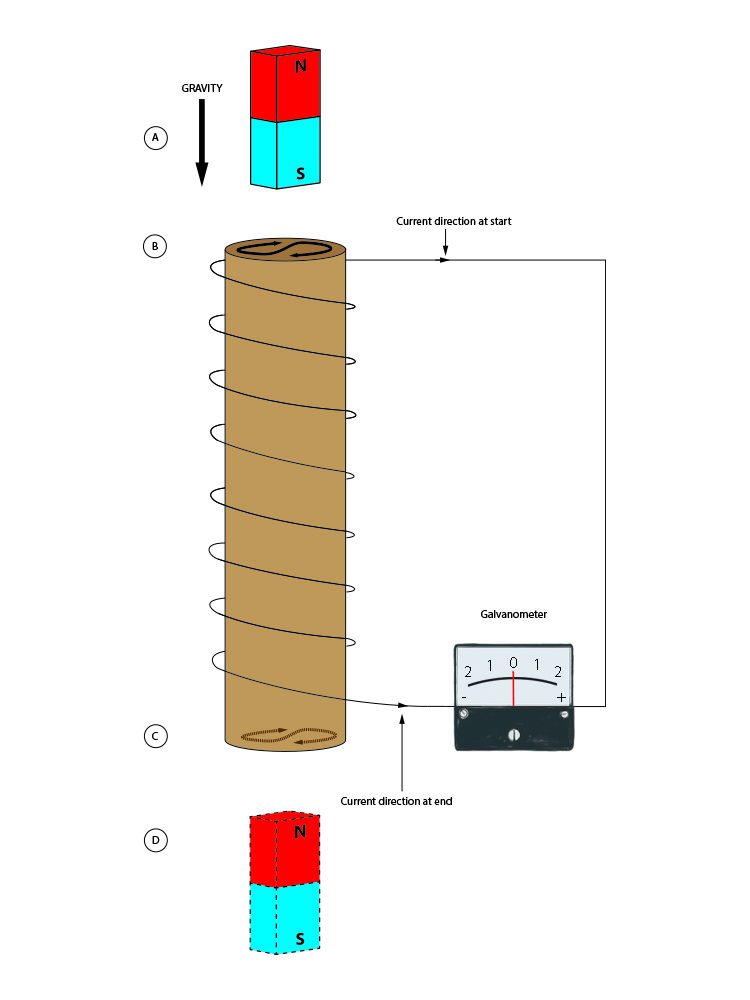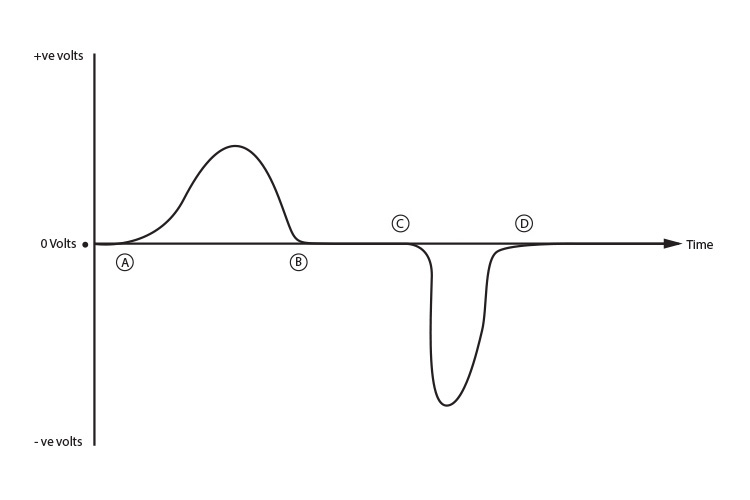Drop a magnet through a solenoid
If you drop a magnet through a solenoid you can record the voltage change against time.

As the magnet approaches the solenoid an electromotive force is generated that opposes the entry of the magnet. A south pole on the magnet develops a south pole at the beginning of the solenoid. At the other end after the magnet has dropped through the solenoid a south pole is generated opposing the north pole moving away. But the current changes direction half way through.
If you watch the galvanometer it will flick from one side to the other – this is reflected in the following graph:

Here, you can see that when the magnet is half-way between the solenoid there is no current flowing in the coil.
NOTE: The graph is slightly uneven and this is due to the magnet accelerating with gravity and dropping faster.
If you drop a magnet into a much longer solenoid as below . . .

. . . the plot of the voltage or current would look like the following:

Between `B` and `C` the magnet is passing inside the solenoid. The magnetic field generated is equal and opposite between these points and therefore no overall voltage or current is generated.




